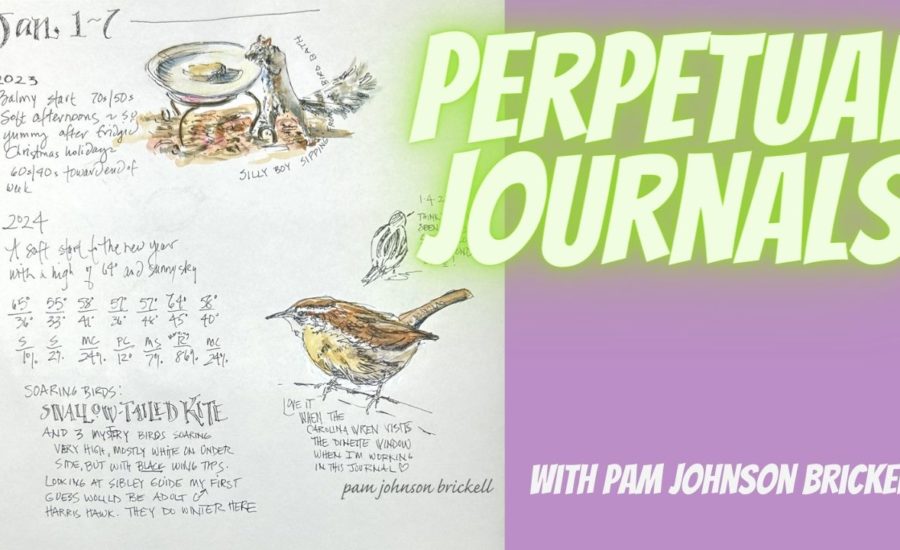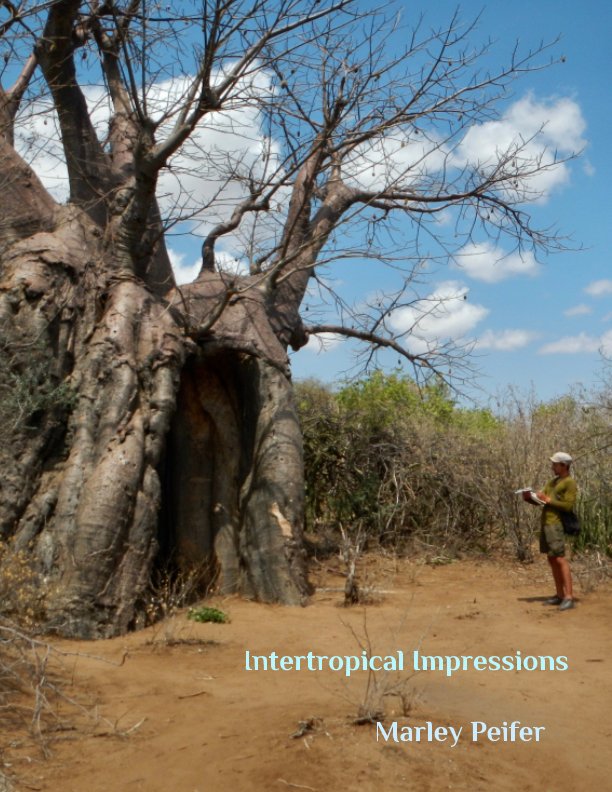What is a perpetual journal and how can I try perpetual journaling? How are perpetual journals different from nature journals? To answer some of these questions I recently interviewed Pam Johnson Brickell.
How she got started with Perpetual Journaling
While Pam has been journaling for over 50 years she just got started with a perpetual journal in the last few years. She was inspired by the perpetual journal practice of Lara Call Gastinger.
What is a perpetual journal?
Below is Lara Call Gastinger’s definition:
This is how a perpetual journal works. The pages are marked with the dates of the 52 weeks of the year (i.e… January 1-7, January 8-14…). The dating of these weeks (in the upper left corner) is not tied to a specific year. The artist uses the journal to record observations during a particular week of the year. This process continues and the artist can return to the same week in subsequent (perpetual) years. Eventually, a page is filled up with multilayered drawings of consecutive years on one page.
The beauty of this process is the repetitive return to each week and learning the changes in the seasons, the effects of climate change, and the development of artistic skills. This process also lowers the bar for perfection and makes the journal process and botanical art more accessible.
Lara is one of the most well known practitioners of perpetual journaling. See more on Lara’s website.
What is the main benefit of a Perpetual Journal?
Now we know what perpetual journaling is it is. So it’s time to ask why do it? Pam said that the main benefit is noticing patterns. Because you can see multiple years you can see the bigger picture.
How does perpetual journaling combine with other journaling?
I’m always curious about how many journals people are using at the same time. I used to be adamant about only having one journal. So I asked Pam. It turns out she has 5 journals going at once!
1. Backyard journal (things she sees in her yard)
2. Water journal (things related to water)
3. Urban sketching journal meetups
4. Golf journal (What she does when her husband is golfing)
5. Carry everywhere journal (quick sketch the meal before husband eats, waiting rooms, etc)
Pam’s philosophy on having multiple journals: Always having one ready to go at any time is the main benefit.
Learn more from Pam
Do you want to learn more journaling and art techniques from Pam? She teaches online and has a free tutorial here: https://linktr.ee/pjbee
Supplies for Perpetual Journal
What supplies are good for perpetual journals and nature journaling in general? Of course this was a question that I had to ask Pam.
Some of the art supplies and journaling supplies she was most excited about. You can click on the links below to go straight to amazon and buy these supplies. They are affiliate links so I get a small percentage if you buy using these links.
- Posca white marker This is a great tool for correction of ink mistakes but it is also what Pam uses for creative flourishes, titles, and signatures on the black cover of her journal.
- Sailor Fude Demanen Pam spoke eloquently about the first time she tried this wonderful calligraphy pen! She said she could feel her creativity flowing straight from her heart through the tip of the pen!
- Platinum carbon fountain desk pen In addition to the Fude Demanen, Pam also uses a modified Platinum Carbon fountain pen. It’s a sawed-off modification!
- For both pens she uses the Platinum Carbon Ink.
- For colored pencils Pam recommends getting no more than 12 colors but the most expensive brand you can afford. Below are two brands she uses.
Choosing a sketchbook for your Perpetual Journal
As it turns out the most important supply for perpetual journaling is the sketchbook. You need to choose a sketchbook that has enough pages to fit the units you are dividing the year by. For example, Pam needs at least 2 pages per week of the year so she needs a sketchbook with over 100 pages. Make sure to plan this out in advance so you are not surprised later.
Additionally, she recommends choosing a paper type that works with the media you plan to use. Hers is relatively lightweight and called “cartridge paper.” This might be too light for heavy use of watercolor. Unfortunately, most sketchbooks with heavier watercolor paper have way fewer pages. You can see the sketchbook that she uses here on Amazon.
Patreon members saw this episode early!
This week’s episode is on YouTube and next week’s episode is on my Patreon. That means patreon members will see new episodes every week as usual. You can learn more about my Patreon here.

